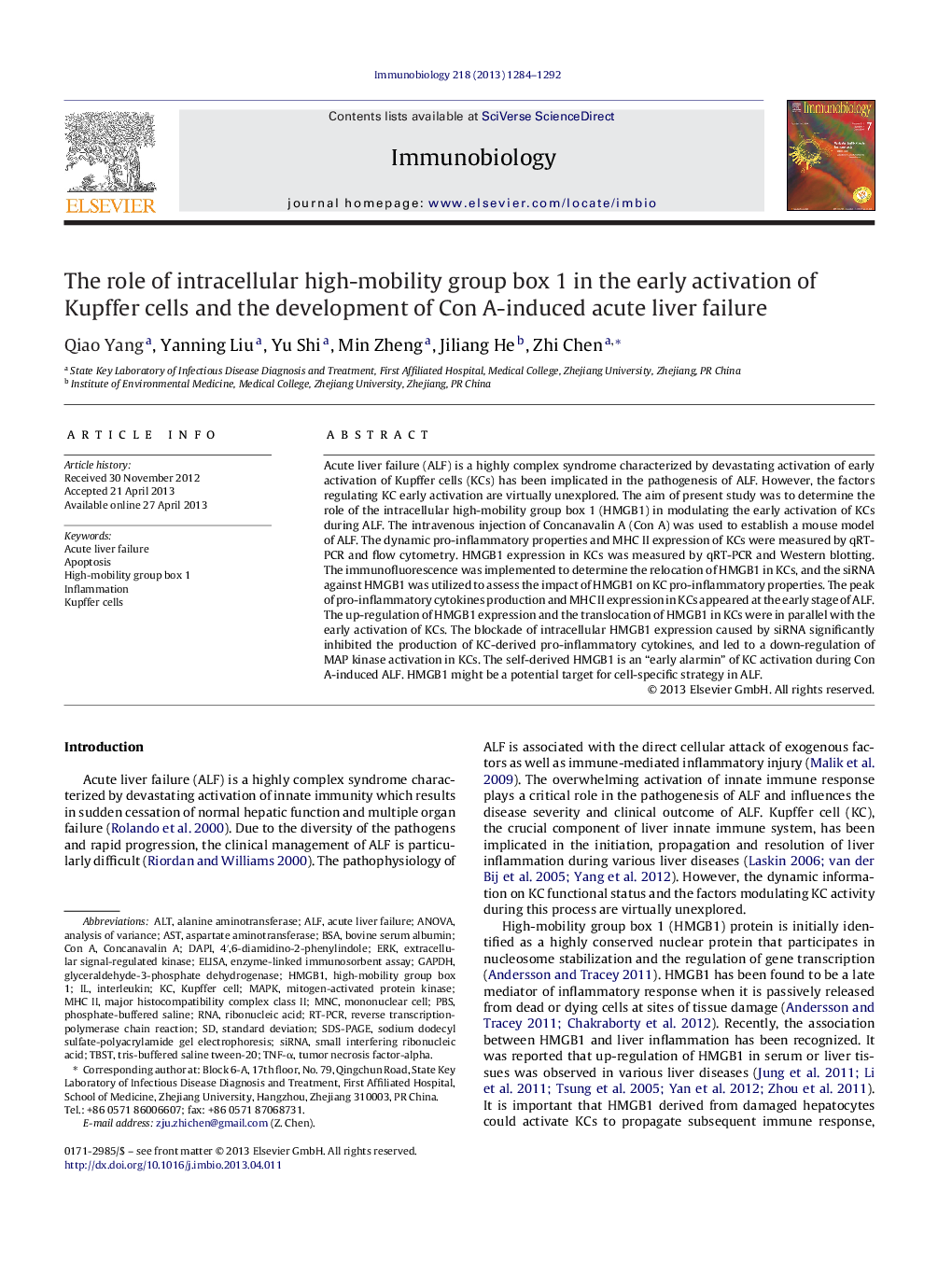| Article ID | Journal | Published Year | Pages | File Type |
|---|---|---|---|---|
| 2182930 | Immunobiology | 2013 | 9 Pages |
Acute liver failure (ALF) is a highly complex syndrome characterized by devastating activation of early activation of Kupffer cells (KCs) has been implicated in the pathogenesis of ALF. However, the factors regulating KC early activation are virtually unexplored. The aim of present study was to determine the role of the intracellular high-mobility group box 1 (HMGB1) in modulating the early activation of KCs during ALF. The intravenous injection of Concanavalin A (Con A) was used to establish a mouse model of ALF. The dynamic pro-inflammatory properties and MHC II expression of KCs were measured by qRT-PCR and flow cytometry. HMGB1 expression in KCs was measured by qRT-PCR and Western blotting. The immunofluorescence was implemented to determine the relocation of HMGB1 in KCs, and the siRNA against HMGB1 was utilized to assess the impact of HMGB1 on KC pro-inflammatory properties. The peak of pro-inflammatory cytokines production and MHC II expression in KCs appeared at the early stage of ALF. The up-regulation of HMGB1 expression and the translocation of HMGB1 in KCs were in parallel with the early activation of KCs. The blockade of intracellular HMGB1 expression caused by siRNA significantly inhibited the production of KC-derived pro-inflammatory cytokines, and led to a down-regulation of MAP kinase activation in KCs. The self-derived HMGB1 is an “early alarmin” of KC activation during Con A-induced ALF. HMGB1 might be a potential target for cell-specific strategy in ALF.
